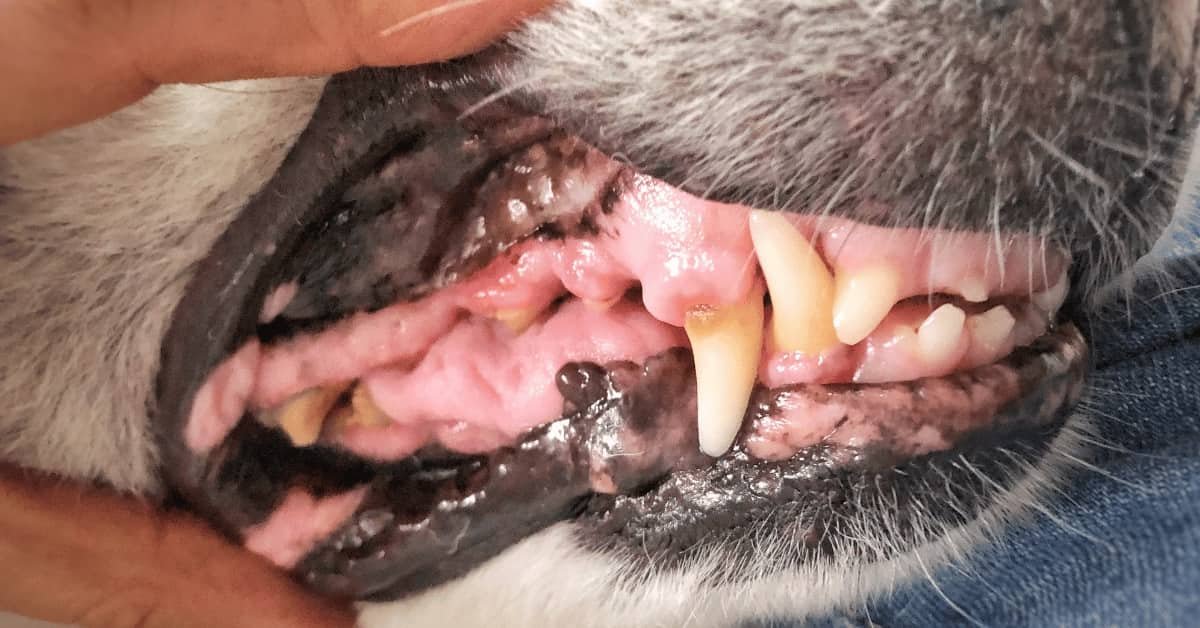How Long Does Dog Tooth Extraction Take? Let’s read out -Dog tooth extraction usually takes 30 to 60 minutes. Complex cases may take longer.
Dog tooth extraction is a common veterinary procedure. It involves removing a tooth due to damage or disease. The process is essential for maintaining your dog’s oral health. Vets typically perform this under general anesthesia. They ensure your pet feels no pain during the procedure.
Post-extraction care includes pain management and soft food. This helps in faster recovery. Regular dental check-ups can prevent the need for extractions. Good oral hygiene is crucial for your dog’s overall well-being. Always consult your vet for the best care practices. This keeps your pet healthy and happy.
Table of Contents
Pre-extraction Preparation : How Long Does Dog Tooth Extraction Take
Preparing for a dog tooth extraction involves several important steps. These steps ensure the procedure goes smoothly. Pre-extraction preparation includes vet consultations and various tests.
Initial Vet Consultation
The initial vet consultation is the first step. During this visit, the vet examines your dog’s teeth. They check for signs of dental issues. This might include broken teeth, infections, or gum disease. The vet will discuss your dog’s dental history. This helps them understand the problem better.
They will also talk about the extraction process. This includes what to expect and how long it might take. The vet may also provide an estimate of the costs involved. This consultation is crucial for planning the procedure.
Pre-surgery Tests
Before the extraction, several pre-surgery tests are necessary. These tests ensure your dog is healthy enough for surgery. Common tests include:
- Blood tests: These check for any underlying conditions.
- X-rays: These provide a detailed view of the teeth and jaw.
- Urine tests: These evaluate kidney function and overall health.
These tests help the vet identify any potential risks. They also help in planning the extraction procedure. The results of these tests guide the vet in making the best decisions for your dog’s health.
| Test Type | Purpose |
|---|---|
| Blood Tests | Check for underlying conditions |
| X-rays | Detailed view of teeth and jaw |
| Urine Tests | Evaluate kidney function |
The Extraction Procedure
Dog tooth extraction is a common veterinary procedure. It helps dogs with dental issues. Understanding the steps of this process can ease your worries. Below are the key stages involved in a dog tooth extraction.
Types Of Extractions
There are two main types of tooth extractions: simple and surgical.
- Simple Extraction: This involves removing a tooth that is visible. It usually takes less time and effort.
- Surgical Extraction: This is more complex. It involves removing teeth that are not easily accessible. This type often requires more time and specialized tools.
Anesthesia Use
During the procedure, anesthesia is crucial. It ensures your dog feels no pain.
Here’s how anesthesia is used:
- Your vet administers a pre-anesthetic injection. This calms your dog.
- Once calm, your dog receives general anesthesia.
- Throughout the procedure, your dog’s vital signs are closely monitored.
Using anesthesia makes the procedure safer and less stressful for your pet.
Duration Of The Procedure
Dog tooth extraction can be a necessary procedure. It’s important to understand the time involved. The duration can vary based on several factors. This section will explain the typical time range and what affects it.
Factors Affecting Time
Several factors can affect the time it takes to extract a dog’s tooth. These include:
- Tooth condition: Broken or infected teeth may take longer.
- Number of teeth: Extracting multiple teeth extends the procedure time.
- Dog’s age: Older dogs might need more care during extraction.
- Dog’s size: Larger dogs can have stronger teeth, making extraction longer.
- Veterinarian’s experience: Experienced vets may perform quicker extractions.
Typical Time Range
The typical time for dog tooth extraction can vary. Here’s a general idea:
| Procedure Type | Approximate Time |
|---|---|
| Single Tooth Extraction | 30-60 minutes |
| Multiple Teeth Extraction | 1-2 hours |
These times include preparation and anesthesia. The actual extraction may be quicker or longer based on the factors mentioned above. Always consult with your veterinarian for a more accurate estimate.
Post-extraction Care
After your dog undergoes tooth extraction, proper care is essential. This ensures a smooth recovery and minimizes complications. Below are crucial steps to follow during the post-extraction phase.
Immediate Aftercare
Immediately after the extraction, your dog will need to rest. Provide a quiet and comfortable space for them. Monitor their behavior and look for any signs of distress.
- Offer small amounts of water.
- Keep their head elevated.
- Avoid strenuous activities.
Check the extraction site frequently. Make sure there is no excessive bleeding. Some bleeding is normal, but it should taper off quickly.
Pain Management
Your veterinarian will likely prescribe pain medications. Administer these medications as directed to keep your dog comfortable.
- Follow the dosage instructions carefully.
- Observe for any side effects.
- Contact the vet if you notice anything unusual.
Some common pain relief options include:
| Medication | Description |
|---|---|
| NSAIDs | Non-steroidal anti-inflammatory drugs. |
| Opioids | Stronger pain relief for severe cases. |
Avoid giving your dog human pain medications. They can be harmful. Always consult your vet before administering any drugs.
Recovery Timeline
The recovery timeline for a dog’s tooth extraction can vary. Each stage has specific care instructions and milestones. Understanding what to expect helps ensure a smooth recovery for your furry friend.
First Few Days
The first few days post-extraction are crucial. Your dog may experience some discomfort and swelling.
- Pain Management: Administer prescribed pain relief medication.
- Swelling: Use cold compresses to reduce swelling.
- Diet: Feed soft foods to avoid irritating the extraction site.
- Activity: Limit physical activity to prevent complications.
Monitor your dog closely for any signs of infection. Symptoms include excessive drooling, foul odor, or increased redness. Contact your vet if these symptoms occur.

Credit: https://toegrips.com
Long-term Recovery
Long-term recovery involves ensuring the extraction site heals properly. This phase can last several weeks.
- Follow-Up Visits: Schedule follow-up appointments with your vet.
- Oral Hygiene: Maintain good oral hygiene to prevent future issues.
- Diet: Gradually reintroduce harder foods as advised by your vet.
- Observation: Watch for any changes in eating habits or behavior.
By following these steps, you can help your dog recover fully and maintain good oral health.
Potential Complications
Dog tooth extraction is a common procedure. It usually goes smoothly. But sometimes, complications can occur. Knowing these potential issues is essential. It helps in taking care of your dog better.
Signs Of Infection
After tooth extraction, watch for signs of infection. These signs include:
- Swelling around the extraction site
- Redness or bleeding that doesn’t stop
- Pus or discharge from the area
- Bad breath or unusual odor
- Pain that seems to worsen
- Loss of appetite
- Lethargy or decreased activity
If you see any of these signs, contact your vet. Early detection helps in quick treatment.
When To Contact The Vet
It’s crucial to know when to seek help. Here are situations to call your vet immediately:
- Excessive Bleeding: If bleeding doesn’t stop, contact your vet.
- Persistent Swelling: Swelling that doesn’t reduce after two days is a concern.
- Fever: A fever indicates an infection. Check with your vet.
- Not Eating or Drinking: If your dog refuses food or water, call the vet.
- Pain: If your dog seems in pain even after medication, get help.
Always follow your vet’s post-operative care instructions. Proper care can prevent most complications.
Tips For Pet Owners
Dog tooth extraction can be stressful for both you and your pet. Knowing how to care for your dog’s oral health after the procedure is crucial. Here are some essential tips to help you maintain your dog’s oral health and prevent future extractions.
Maintaining Oral Health
Maintaining your dog’s oral health is vital. Healthy teeth can prevent extractions.
- Brush your dog’s teeth daily. Use a dog-specific toothbrush and toothpaste.
- Give your dog dental chews. They help reduce plaque and tartar.
- Schedule regular vet check-ups. Early detection of dental issues is key.
Consider a balanced diet for your dog. It plays a role in dental health. Here is a sample diet plan:
| Meal | Food Type | Frequency |
|---|---|---|
| Breakfast | Dry Dog Food | Daily |
| Lunch | Raw Vegetables | Every Other Day |
| Dinner | Wet Dog Food | Daily |
Preventing Future Extractions
Preventing future extractions is possible with proper care. Follow these tips:
- Provide chew toys. They help keep teeth strong.
- Avoid hard bones. They can break your dog’s teeth.
- Monitor your dog’s chewing habits. Watch for signs of dental pain.
Adopt a proactive approach to dental care. It ensures a healthy smile for your pet.
Frequently Asked Questions
How Long Is A Dog Tooth Extraction?
A dog tooth extraction typically takes 30 minutes to an hour. Complexity and number of extractions can affect time.
Does Dog Tooth Extraction Require Anesthesia?
Yes, dog tooth extraction requires general anesthesia. This ensures the procedure is pain-free and stress-free for your pet.
Is Dog Tooth Extraction Recovery Painful?
Post-extraction, dogs may experience mild discomfort. Pain relief medications and proper care help manage any pain effectively.
How To Care For Dog Post-extraction?
Provide soft foods and follow your vet’s aftercare instructions. Monitor for signs of infection or complications.
Conclusion
Understanding the duration of a dog tooth extraction helps pet owners plan accordingly. The procedure typically takes 30 to 60 minutes. Always consult your veterinarian for specific details. Proper aftercare ensures a smooth recovery for your furry friend. Regular dental check-ups can prevent future issues.
Keep your pet’s oral health a priority.



